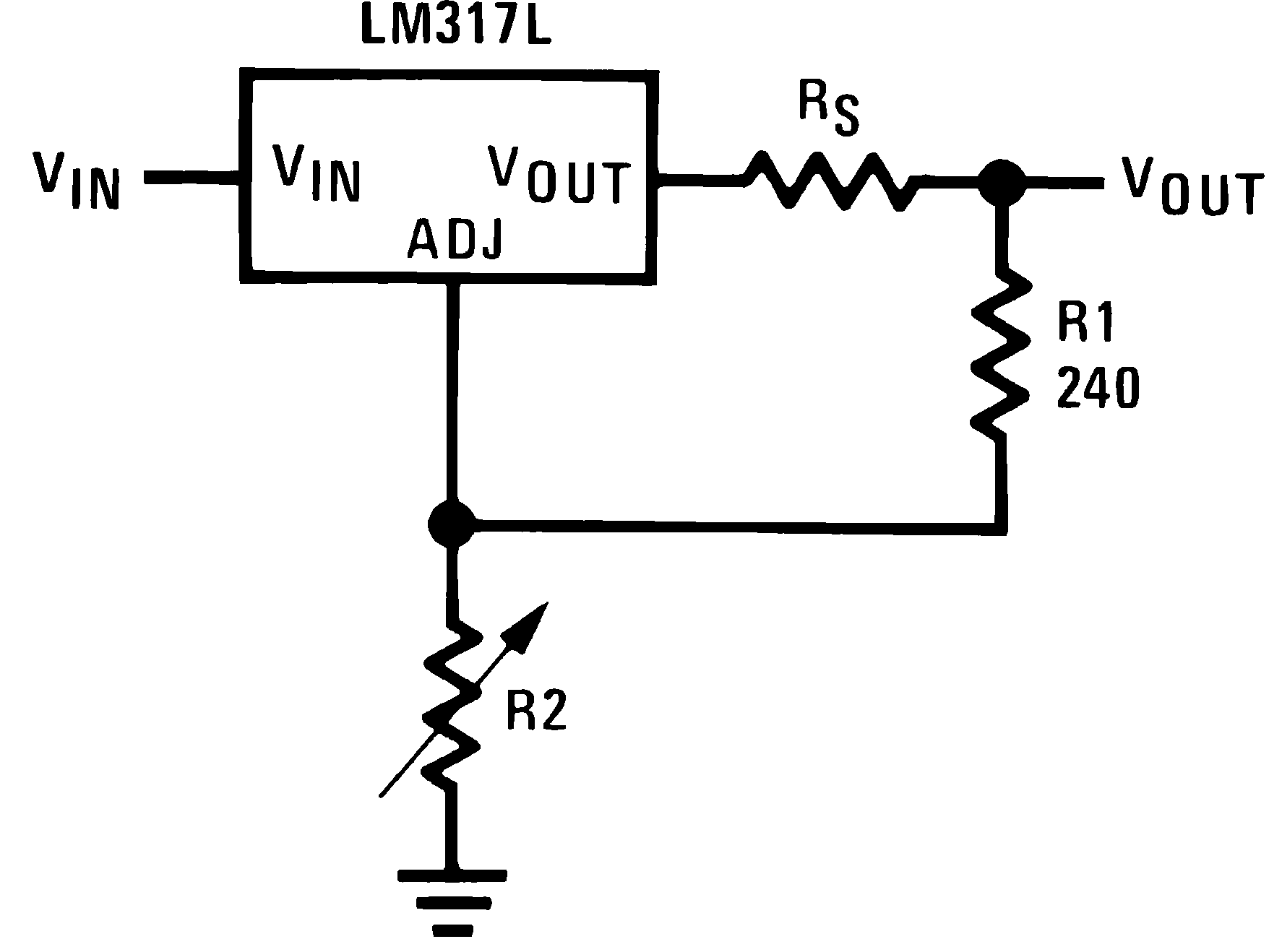SNVS775L March 2000 – January 2018 LM317L-N
PRODUCTION DATA.
- 1 Features
- 2 Applications
- 3 Description
- 4 Revision History
- 5 Pin Configuration and Functions
- 6 Specifications
- 7 Detailed Description
-
8 Application and Implementation
- 8.1 Application Information
- 8.2
Typical Applications
- 8.2.1 1.25-V to 25-V Adjustable Regulator
- 8.2.2 Digitally-Selected Outputs
- 8.2.3 High Gain Amplifier
- 8.2.4 Adjustable Current Limiter
- 8.2.5 Precision Current Limiter
- 8.2.6 Slow Turnon 15-V Regulator
- 8.2.7 Adjustable Regulator With Improved Ripple Rejection
- 8.2.8 High Stability 10-V Regulator
- 8.2.9 Adjustable Regulator With Current Limiter
- 8.2.10 0-V to 30-V Regulator
- 8.2.11 Regulator With 15-mA Short-Circuit Current
- 8.2.12 Power Follower
- 8.2.13 Adjusting Multiple On-Card Regulators With Single Control
- 8.2.14 100-mA Current Regulator
- 8.2.15 1.2-V to 12-V Regulator With Minimum Program Current
- 8.2.16 50-mA Constant Current Battery Charger for Nickel-Cadmium Batteries
- 8.2.17 5-V Logic Regulator With Electronic Shutdown
- 8.2.18 Current-Limited 6-V Charger
- 8.2.19 Short Circuit-Protected 80-V Supply
- 8.2.20 Basic High-Voltage Regulator
- 8.2.21 Precision High-Voltage Regulator
- 8.2.22 Tracking Regulator
- 8.2.23 Regulator With Trimmable Output Voltage
- 8.2.24 Precision Reference With Short-Circuit Proof Output
- 8.2.25 Fully-Protected (Bulletproof) Lamp Driver
- 8.2.26 Lamp Flasher
- 9 Power Supply Recommendations
- 10Layout
- 11Device and Documentation Support
- 12Mechanical, Packaging, and Orderable Information
封装选项
机械数据 (封装 | 引脚)
散热焊盘机械数据 (封装 | 引脚)
订购信息
7.3.1 Load Regulation
The LM317L-N is capable of providing extremely good load regulation but a few precautions are needed to obtain maximum performance. The current set resistor connected between the adjustment terminal and the output terminal (usually 240 Ω) must be tied directly to the output of the regulator rather than near the load. This eliminates line drops from appearing effectively in series with the reference and degrading regulation. For example, a 15-V regulator with 0.05-Ω resistance between the regulator and load will have a load regulation due to line resistance of 0.05 Ω × IL. If the set resistor is connected near the load the effective line resistance will be 0.05 Ω (1 + R2/R1) or in this case, 11.5 times worse.
Figure 14 shows the effect of resistance between the regulator and 240-Ω set resistor.
With the TO-92 package, it is easy to minimize the resistance from the case to the set resistor, by using two separate leads to the output pin. The ground of R2 can be returned near the ground of the load to provide remote ground-sensing and improve load regulation.
 Figure 14. Regulator With Line Resistance in Output Lead
Figure 14. Regulator With Line Resistance in Output Lead